Welcome to Vilnius, where history whispers through charming cobblestone streets and architectural marvels await at every turn. Whether you're a history buff, a photography enthusiast, or simply a traveler seeking authentic experiences, Vilnius Old Town is a treasure trove waiting to be explored. With just two days to soak in the beauty and rich heritage of this European gem, let's dive into the best things to see in Vilnius Old Town.
When to visit Vilnius?
When it comes to the weather, Vilnius is one of those all-or-nothing cities. If on one hand it is known for its harsh winters, in summer temperatures can be quite high. This way, I consider that the best time to visit the city is really in late spring/early summer (May/June). However, in my case, I ended up visiting in Mid-July (and it wasn't too hot either). Tourist wise - there were quite a few groups around but nothing unmanageable.
Immersing in History and Culture
During my tour of the Baltic capital cities, Vilnius Old Town stood out as my favourite. I particularly liked the diverse architecture lining the streets. Exploring the Old Town and Uzupiz for just 2 days left me with the impression that there was still much more to discover in Vilnius.

Vilnius (and Lithuania) are known as one of the cheaper countries to visit in Europe, a trip here can easily be done on a budget.
Check out things like Free Walking Tours - these are filled with history and knowledge and run based on tips only. I did the Friday evening tour and it lasted around 2 hours, this was also my first evening in Vilnius so it definitely helped with gauging my bearings for the next day. They start at the Vilnius Town Hall!
Uzupis - Republic of Uzupis

One of the most spoken about 'must-see' areas of Vilnius, is the Republic of Uzupis.
Užupis is a self-proclaimed Republic located in Vilnius, often likened to the Montmartre district in Paris. The residents of this area declared the Republic of Užupis in 1997, complete with its own flag, currency, president, cabinet of ministers, a constitution authored by Romas Lileikis and Thomas Chepaitis, an anthem, and an army. They celebrate their independence on April 1st each year and have their own stamp which you can have stamped into your passport!
Uzupis is known as an 'art district' meaning you'll come across some unusual statues and pieces of street art!
Literature Street (Literatų Gatvė)

A street dedicated to literature. There are over 200 plaques on the wall now, with the project beginning in 2009. This street is like a temple for those that are fans of Lithuanian literature which started when a group of artists decided that Literatu Street should live up to the name. They started small and placed a few artefacts, like tiles, paintings, abstract symbols, and excerpts for the City project to be the Capital of culture. Over the years, this has been expanded and now there are plaques dedicated to authors who have a connection with Vilnius and even those from around the globe.
Cathedral Square

The square gets its name from Vilnius Cathedral, the main monument in the area. Situated in the city's historic centre, the Cathedral, also known as the Cathedral of St. Stanislaus and St. Ladislaus, is a significant symbol of the Catholic Church in Lithuania. It was constructed on the site of a former pagan temple. Despite its Classical design, the Cathedral incorporates elements of various styles like Gothic, Baroque, and Renaissance. Next to Vilnius Cathedral stands the Bell Tower. Standing at a height of 57 meters, ascending to its top offers unparalleled views of the historic centre. Moreover, this tower houses the city's oldest clock, which chimes every quarter of an hour.
Bastion City Viewpoint

The Renaissance-style Bastion or Barbican in Vilnius was originally designed by a German military engineer, Friedrich Getkant, as part of the city's defence wall. Built in the 17th century, it endured significant damage during conflicts with Moscow. Throughout World War I and II, the German Military utilised the Bastion. Today, the structure has largely remained intact, offering visitors a glimpse of the original defence wall at the accompanying museum. The museum provides a comprehensive history of the Bastion's role in safeguarding the city.
Vilnius University and Presidential Palace

Visiting the Presidential Palace grounds is actually quite calm and quiet during the day. I found the main gardens area to be home to a few reclining sun beanbags and a decent view.
After briefly relaxing here with my book, I headed over to Bell Tower of St. John's Church, located in the centre of the Old Town. For 5 Euro, you can take the lift (up so far) to see out over the city, you can then take the small spiralling steps (be warned!) up to the highest viewpoint to see the sights like I have here -->
This final part of the climb is not for the faint-hearted. It's narrow, cramped and low hanging.
Churches of Vilnius Old Town
There are a large number of churches dotted around Vilnius' Old Town with some stunning designs both inside and outside. Here are some of my favourites from my trip.

St Casimir is situated near the Town Hall Square in the Old Town and serves as a Roman Catholic church. Constructed in the 17th century by the Jesuits, it is the oldest baroque church in Vilnius and is devoted to the revered prince Saint Casimir. Over the years, the church has undergone various transformations, serving as an Orthodox church, an Atheism museum during the Soviet era, and ultimately returning to its original status as a Catholic church today.

St. Anne's Church is another church that really caught my eye here in Vilnius. It's the flamboyant Gothic church of St Anne. Made with red bricks, it is one of the finest examples of a Gothic building in Lithuania. This church is the reason why Vilnius Old Town is included on the UNESCO world heritage list as it hasn’t changed in over 500 years! It was originally built for Anna, the Grand Duchess of Lithuania, and the wife of Vytautas the Great.

St. Theresa's Church in Vilnius Old Town is a historic Baroque-style church known for its ornate interior and stunning architecture. The church was built in the 17th century and features intricate frescoes, beautiful altars, and a majestic dome. St. Theresa's Church is a popular tourist attraction and a significant religious site in Vilnius, attracting visitors with its rich history and spiritual ambiance.

St. Catherine's Church in Vilnius, Lithuania is like a time machine back to the 16th century, with its amazing Baroque style and fancy decorations. Inside, you'll find lovely paintings and sculptures, creating a chill vibe perfect for some quiet time. Oh, and don't miss the killer views of Vilnius from the top - a total must-see for history, art, and architecture buffs!
Streets of Vilnius Old Town
The Old Town of Vilnius is like a labyrinth of quaint streets that look like something from a fairytale! Whether they provide a view of the castle, or the cobbled paths wind around to another church or alleyway; this is somewhere where you will want to get lost. There are many picturesque streets in the Old Town to choose from and I’ve already mentioned Literatu Street. But, I won’t leave you hanging on where to find some others:
Castle Street - Also known as Pilies Street, this is a street that guides you towards the castle ruins. Starting from Cathedral Square, you will be greeted by the charming cobbled Castle Street bustling with shops, eateries, and unique spots to discover. For the most picturesque sight, simply turn around to catch a perfect glimpse of Gediminas Tower in the far distance. It's a view as delightful as a postcard!
Bernardinu Street – Located just off Pilies Street, this charming alley is lined with historic buildings, quaint lanes, and traditional oil lamps. It's an ideal spot for photographers looking to discover picturesque corners and details.
Stikliu, M. Antokolskio & Žydu (Jewish Ghetto) – Upon reaching the end of Pilies Street across from the Town Hall, turn left to enter the Jewish Ghetto area. The charming and vibrant streets are lined with cafés, bars, and shops for shopping. Signs in Hebrew are visible, and you can explore the location where the Great Synagogue once stood. Keep an eye out for the 'people on the walls', which are paintings depicting former residents of this area.
Courtyards – Photographers have frequently favored the hidden courtyards located in the historic area of the town. Among the well-known ones are the Alumnatas Courtyard and the courtyard of Sidabrynas Antique Shop.

End your Vilnius Old Town adventure with a visit to Pilies Street, lined with cozy cafes and artisan shops. Sample local delicacies like cepelinai (potato dumplings) at Etno Dvaras for a true taste of Lithuanian cuisine. Help yourself to a local beer while you're at it.
As you bid farewell to Vilnius Old Town, remember that this historic city has more stories to tell than can be discovered in just 48 hours. So, until next time, keep exploring and uncovering the hidden gems of this enchanting destination!
Pack your bags, lace up your walking shoes, and get ready for an unforgettable journey through Vilnius Old Town!









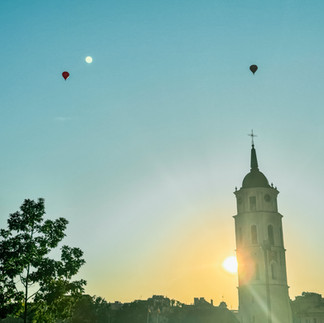










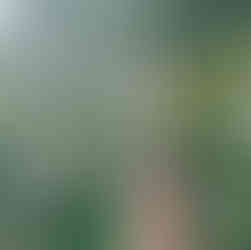




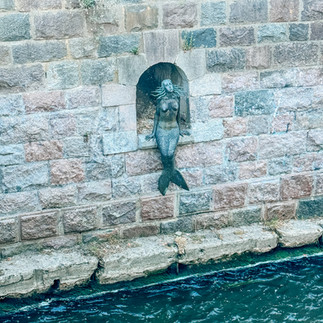

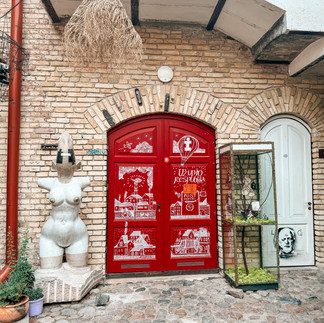

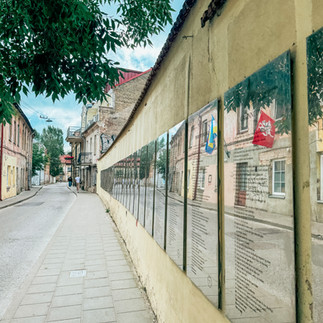












Comments